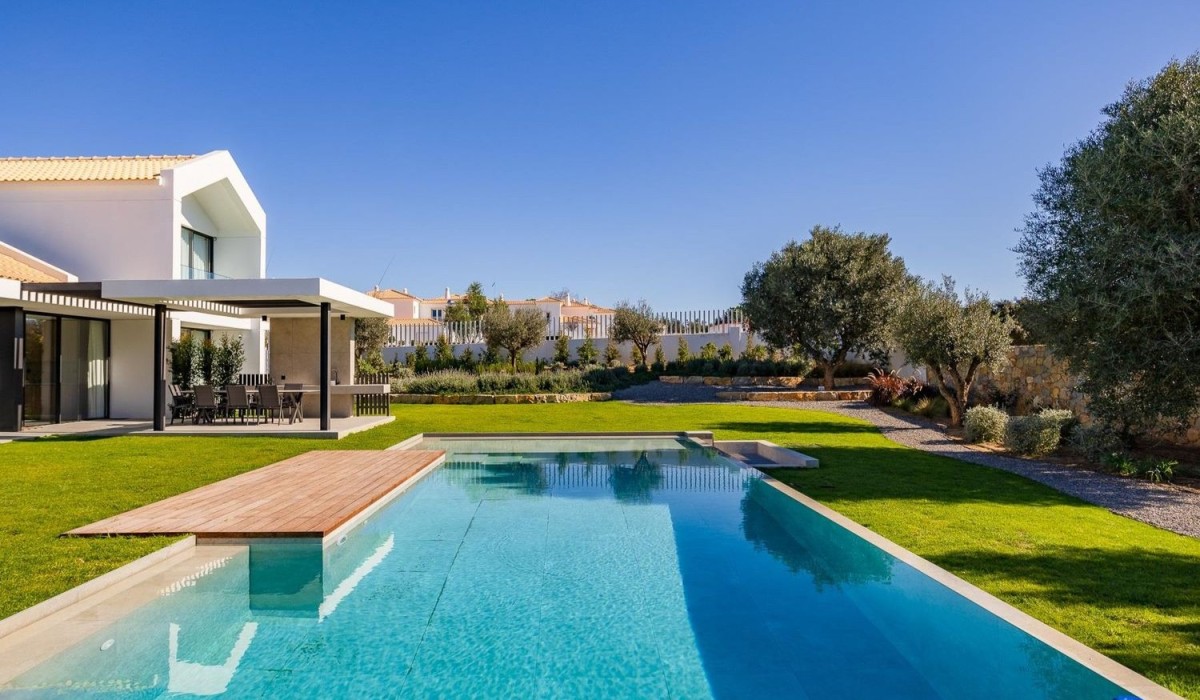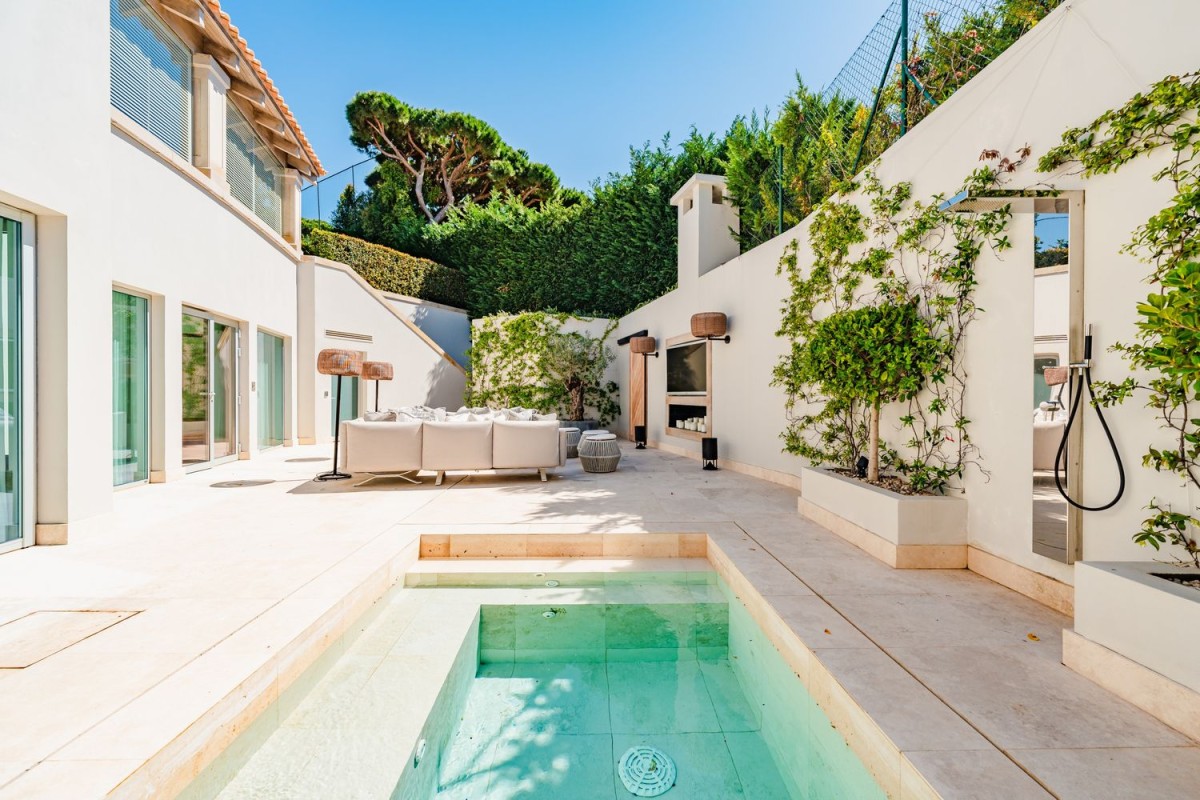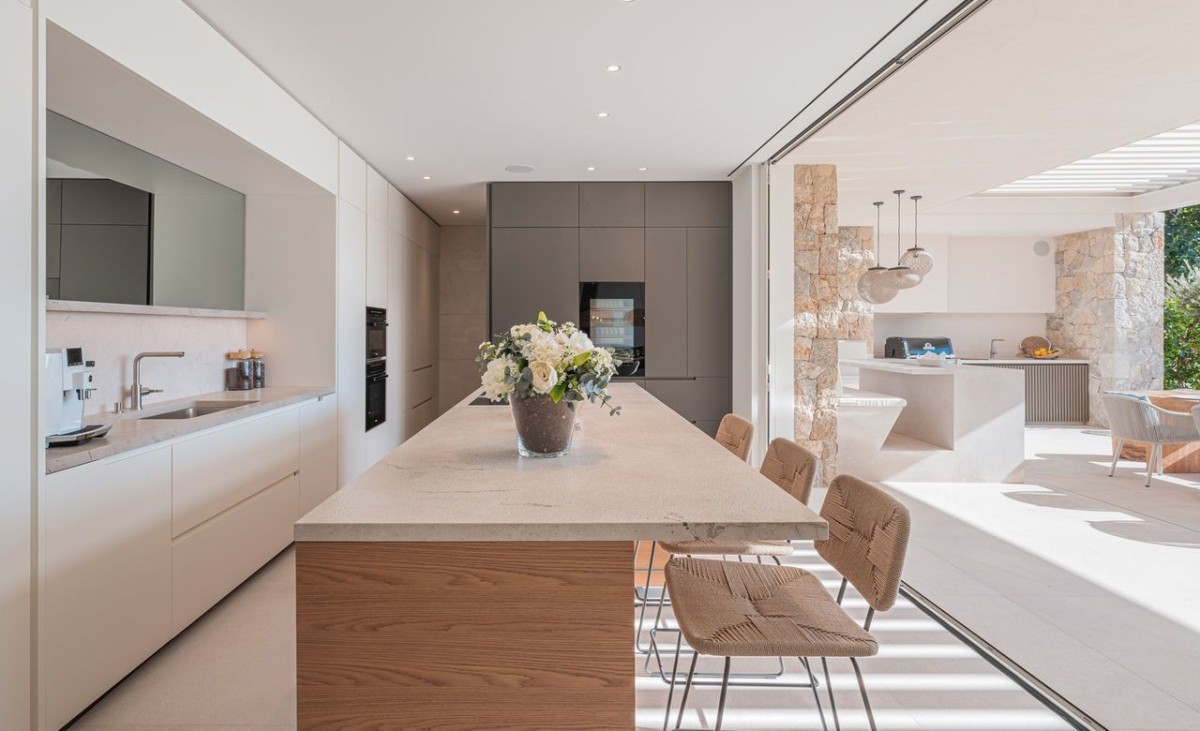
High-end residential real estate continues to attract investors and/or buyers in Portugal, even though supply, similar to what is seen in the sector as a whole, remains below demand. This is a market (high-end) that can be divided into three segments: Affluent, Premium, and Luxury. This is one of the conclusions drawn from the study "The High-End Residential Market in Portugal – Impact and Trends," prepared by NOVA SBE for Porta da Frente Christie's, based on data (also) from idealista and presented on Tuesday 25th February 2025.
According to the study, which primarily aims to analyse the impact of the high-end residential real estate sector on the Portuguese economy, in the last nearly four years, from Q1 2021 to Q2 2024, house prices have risen by more than 23%, with the bulk of the supply (95%) concentrated in Lisbon, Faro, and Porto.
These are some of the conclusions of the study, which was coordinated by Pedro Brinca and João Duarte, researchers at NOVA SBE.
- What does high-end real estate mean?
- Evolution of the high-end housing market supply
- Where are most high-end homes listed?
- Evolution of demand for high-end homes in Portugal
- High-end home prices rise by 23%
- What impact does the high-end market have on the economy?
- What to expect for the future of the high-end residential market in Portugal?
What does high-end real estate mean?
The high-end sector is defined as the market for new and pre-owned residential properties where the price per square metre (m²) is among the top 10% most expensive in the country. This sector is then subdivided into the following segments:
- Affluent: Between the 10% and 5% most expensive (90th to 95th percentile).
- Premium: Between the 5% and 2% most expensive (95th to 98th percentile).
- Luxury: The 2% most expensive.
The impacts of the Covid-19 pandemic are evident in the study’s results, both in terms of declines and recoveries in various variables, with differing rhythms and impacts, the study notes.
Evolution of the high-end housing market supply

The supply of high-end homes in Portugal is concentrated in the districts of Faro, Lisbon, and Porto. From the first quarter of 2021, the number of properties listed saw a significant reduction until the third quarter of 2022, dropping from around 33,000 properties to about 21,000 properties.
"After the third quarter of 2022, the market stabilised, showing signs of gradual recovery, but with the number of properties listed in the fourth quarter of 2022 still significantly below that of the first quarter of 2021. This recovery trend continued in 2023, with a strong rebound in the last quarter of that year. During the final quarter of the period under analysis, the second quarter of 2024, approximately 27,000 high-end properties were listed," concludes the research.
It is worth highlighting that the Affluent segment presents the largest volume of listed properties during the period under review, followed by the Premium, and lastly, the Luxury segment.
"There is also a general decline from the first quarter of 2021 until the third quarter of 2022, similar across all segments. The Affluent segment saw a decrease from around 16,000 properties at the start of 2021 to around 11,000 in Q3 2022. The Premium segment also showed a downward trend in the same period, dropping from around 10,000 to approximately 7,000 properties. For the Luxury segment, there was a decrease from around 6,000 to approximately 4,000. After Q3 2022, a recovery trend was observed in all three segments, with the strongest recovery seen in Affluent. During the period under review, the growth rate of the number of listed properties was negative, at -16% for Affluent, -13% for Premium, and -15% for Luxury."
Where are most high-end homes listed?
In 2023, the five areas with the highest number of high-end properties for sale were:
- Cascais and Estoril (8,952)
- Quarteira (5,066)
- Santo António (4,017)
- Avenidas Novas (3,472)
- União de Freguesias de Cedofeita, Santo Ildefonso, Sé, Miragaia, São Nicolau e Vitória (3,372)
Data also shows that in Q2 2024, Lisbon, Faro, and Porto absorbed over 95% of the high-end supply. "Within these three districts, Lisbon stands out, capturing more than 60% of the high-end supply throughout the period analysed (...). Faro follows in second place, with about 25%, showing a growth trend, which could be explained by tourism and foreign investment in the district. Porto district comes next, capturing less than 10% of the total high-end supply in Portugal. Finally, all other districts together account for around 5%."

Other key points from the high-end housing supply study:
- Trends: A significant increase in properties offered in Setúbal, Beja, and Madeira, especially in the Affluent segment.
- Property Type: Villas account for approximately one-third of the listed properties. Since 2021, there has been an increase in the proportion of 2-bedroom apartments (a 5 percentage point rise, from 30% to 35%) at the expense of studio (T0) and 1-bedroom apartments (T1).
- Increase in Supply: The rise in high-end housing supply in 2022 was driven by new construction, particularly in the Affluent and Premium segments. This increase occurred in a context of significant growth in construction costs (around 30% from 2021 to 2024).
- Construction Licenses: The total number of new housing construction permits remained constant, meaning the construction sector in Portugal, between 2021 and 2024, focused more on high-end residential projects.
Evolution of demand for high-end homes in Portugal
"When we look at the sector as a whole, we found that the pressure of demand on supply doubled between Q1 2021 and Q3 2023, basically stabilising thereafter," the study indicates, highlighting "high volatility in the effectiveness of listings, with significant fluctuations throughout the period under review."
"In particular, there was considerable fluctuation in the number of leads generated by each listing, without a clear and consistent growth or decline trend. By the end of Q2 2024, the end of the period under review, demand pressure was lower compared to Q1 2023. This movement, following the peak of continuous growth observed in Q3 2022, appears to converge into a stabilisation at a lower level, coinciding with a context of rising interest rates, the end of golden visas in 2023, and the announcement of the end of the Non-Habitual Resident (NHR) regime in 2024, which contributed to generating uncertainties in this market segment," the document states.
The analysis shows that the Affluent and Premium segments followed the same pattern as the high-end sector overall, with the Affluent segment leading in lead generation due to a higher supply of properties and a larger base of potential clients.
"However, the Luxury segment exhibits a slightly different dynamic, having remained immune to the sharp decline seen in the other two segments in Q4 2022, with only one significant drop in Q2 2023. Since then, this segment has shown a growth trend, and by Q2 2024, demand pressure levels were already similar to those in Q3 2023, in contrast to the behaviour of the other two segments," the study notes.
High-end home prices rise by 23%
The nominal price per square metre of high-end homes increased by 23% during the period under review. According to the study, the nominal increase of 23% means that buyers were paying more per square metre in 2024 than in 2021. "However, due to inflation – which reduces the value of money – the real increase is only 3%, indicating that the actual gain for sellers, adjusted for purchasing power, was much more modest." In other words, "part of the nominal price increase was eroded by the general rise in the cost of living during the same period," the study argues.

In segment analysis, the nominal price per square metre for the Luxury segment stands out, followed by Premium, and lastly, Affluent. All three segments show the same upward trend in nominal price per square metre, reflecting a uniform pattern across segments regarding the decline in supply, increase in demand, and acceleration of inflation.
It is also noteworthy that the price gap between the Luxury and Premium segments is more than double the gap between the Premium and Affluent segments.
"Looking at the evolution of the average price of high-end homes in Portugal, between 2021 and 2024, the average price per property has shown an upward trend, just like the price per square metre. From the first quarter of 2023, the growth in prices seems to accelerate, with a more pronounced increase in the last few quarters. This upward trend in the average prices of high-end homes indicates strong demand for these properties," the report states.
What impact does the high-end market have on the economy?
The study also highlights the importance of the high-end residential real estate sector in the national economy, noting that its socio-economic impact is quite significant.
Key insights from the study in economic terms include:
- The weight of high-end residential real estate activity in the national economy is very high in each of the years analysed. However, 2022 was the year that generated the most economic activity and, consequently, created the most wealth (GDP), distributed the most income, and generated the most jobs.
- Of the two segments of activity included in the analysis, construction accounts for the largest socio-economic impact in each of the years.
- The construction of new high-end residential units made the following contribution to the national economy during the period under review:
- The sales (real estate brokerage) of high-end units made the following contribution to the national economy during the period under review:
What to expect for the future of the high-end residential market in Portugal?
In terms of future prospects, the study predicts that property prices in general, and high-end homes in particular, will continue to rise in 2025, due to factors such as:
- Demand consistently outpacing supply;
- Expectations of favourable economic factors, such as increased household income and potential interest rate reductions;
- Construction costs are unlikely to slow down, and it is not expected that the planned production of new homes will be significantly more affordable, which will perpetuate high property values;
- Demand will likely remain focused on urban and tourist areas, with Lisbon, Faro, and Porto continuing to face pressure due to their appeal to both residents and investors.

Simultaneously, as inflation in Europe eases, monetary policy is expected to moderate, leading to better financing conditions for new investments. This could further boost high-end real estate projects in the country.
"Optimistic sentiment persists even with expectations of higher production costs, as the high-end market tends to be less impacted by these factors due to its segmentation and resilient demand, which is less sensitive to price. However, the end of golden visas and the Non-Habitual Resident (NHR) regime will require strategies to mitigate the reduced demand from certain profiles of foreign buyers," the experts point out.
The study also highlights risks associated with the sector, particularly economic volatility, which could be caused by international conflicts, energy crises, and other factors. This could impact investor confidence and negatively influence the real estate market.

